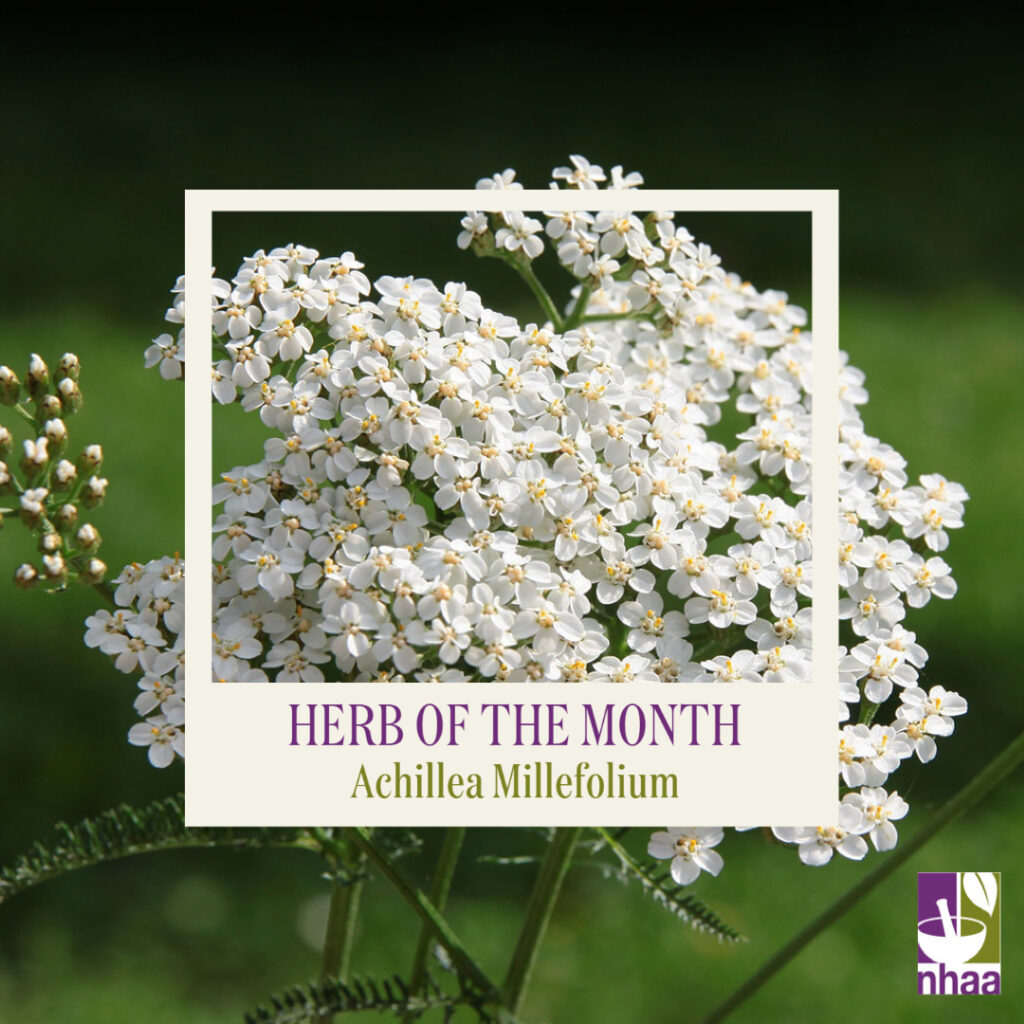
🌿This month’s herb of the month is Yarrow (Asteraceae), or Achillea Millefolium.
🌿 Botanical name and description:
A widespread and versatile perennial creeping rhizomatous herb, strongly scented, with non-flowering rosettes during development. When mature, Yarrow has erect non-branching stems up to 90cm tall with finely cut leaves. Yarrow blooms from Summer to Autumn forming clusters of ‘umbel- like’ flat-topped small white, yellow, or red florets. The aerial parts of Yarrow are gathered as the flowers begin to open; the flowers contain greater amounts of essential oils which are known to initiate some of the herb’s therapeutic properties. Yarrow’s other constituents include sesquiterpene lactones, flavonoids, alkaloids, tannins, sterols, and phenolic acids plus vitamins A, C, E, & K and minerals including manganese, copper, and potassium.
🌿 History:
Originally from Europe, the Mediterranean, and Asia, Achillea, was reputedly named after the infamous Achilles who learnt of the herb from knowledgeable mentors, using it as a vulnerary and styptic to help heal wounds on the battlefield. Yarrow has a rich heritage as a traditional heal-all, entrenched in magic and myth, used as a tool for divination by Europeans and Asians alike.
🌿 Traditional Use:
Sold by traditional herbalists as a bitter and medicated vapour bath for fevers, as a treatment for intermittent fevers, and made into ointments for wounds. Yarrow was also supposedly used as a substitute for hops in the ale-making process, in the belief it would impart further intoxicating qualities.
🌿 Actions:
Anti-inflammatory, antimicrobial, antipyretic, antiseptic, astringent, bitter tonic, diaphoretic, diuretic, hypotensive, spasmolytic, and styptic.
🌿 Modern use:
Cardiovascular system for thrombotic conditions with hypertension and as an astringent for catarrhal conditions in the respiratory tract. Also, in the GIT for gastritis, intestinal colic, dyspepsia, anorexia, and general indigestion. Plus, as a menstrual regulator for dysmenorrhoea, amenorrhoea, and menorrhagia.
🌿 Science and clinical trials:
Research on Yarrow and its constituents is plentiful, with numerous papers exploring the essential oil or focusing on its anti-inflammatory or antioxidant properties. The literature details the potential for extracts of Yarrow to control H.pylori infection, to reduce growth inhibitory activity cell viability against breast cancer, and to improve the healing process for various skin injuries.
🌿 Sustainability:
A hearty herb foraged over thousands of years for both first aid and food. Yarrow is drought and frost-resistant and will flourish in pots, containers, or soil, in both cool and warm temperatures, and in full sun or part shade.